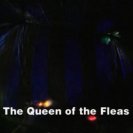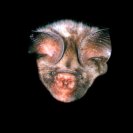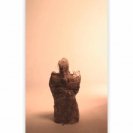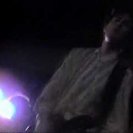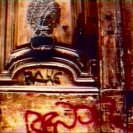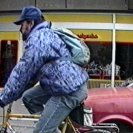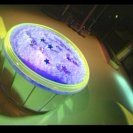From his earliest Super 8 works to the most recent video projects Ross Harley has been decoding visual language. Starting with the tropes of horror films and the grammar of architecture, through to furniture and interior design of the 1950 and 60s to the exterior world of parks, petrol stations, highways and airports, Harley has used film and video to investigate social meaning, subjective association and the constellation of interconnections between life, image and sensation.
Early pieces such as Roadblock (1988) combined video and Super 8 to produce hybrid works that investigated the rift between real and imagined spaces. In Roadblock¸ for example, Harley intercut grabs from Hollywood films They Drive By Night (1940) and Sweet Smell of Success (1957) — and the latter movie’s location footage of New York at night — with shots of night time streets in Sydney. The problematic relationship between the real and the cinematic was ironically reinforced with titles from Sweet Smell of Success attesting to its own locative authenticity. Beauty and the Beat (1988) meanwhile dealt with the lexicon of transformations featured in classic horror films including monsters of movie legend such as the Wolfman and Dracula.
From the late 80s onwards Harley has maintained a prodigious output producing at least three or four video pieces every year — in 2006 he completed 11 screen projects — for close to 20 years, and has explored video in every conceivable form from installation, multiple screens pieces and site specific video works to online projects and collaborations with artists, architects and programmers. Despite this enormous output, his thematic interests have been remained consistent, exploring a fascination with the play between the virtual and the actual.
Three projects illustrate the breadth and depth of Harley’s work. The Digital Garden (1992) was an elaborate, multi-screen installation piece in which the audience viewed projections of formal gardens whose designs and settings were mirrored by the faux-garden surroundings of the installation itself. The architectural space of the interior mirrored the footage of parks and farmland, suggesting that these “natural spaces” were in fact mediated experiences of a distant nature, no more real or natural than the installation. By contrast, Motion Landscapes (1999) compiled fragments of numerous previous short video works into a 35 minute essay on the nature of velocity, from the individual experience of motion to the cultural dimensions of mechanised transport. Harley mined public and private archives for material and layered sound and music into an evocative whole. In yet another stream of work, Cardoso Flea Circus LIVE IN PARIS (1998 & 2000), Cardoso Flea Circus Installation (2007), and Emu Wear Black Channel and Emu Wear White Channel (both 2008) represent an ongoing collaboration with Maria Fernanda Cardoso, documenting installation and performance works that explore perceptions and representations of nature.
Harley’s major works of the past decade present a concerted examination of the codes, tags and tones of stateless spaces such as the international airport. Aviopolis (2005) was a project that incorporated video, a website, a book and an installation. The video project was in two parts: Aviopolis: Airside was a moody compilation of imagery from the “working” side of an airport — the strips, tarmac and machinery of the runway and gate, while Aviopolis: Triptychs was a single screen project divided into three images of the passenger side of an airport — the architecture of the airport lounge, gates and check in desks, etc - with a running text along the bottom of screen. Harley’s ongoing project Loom-o-Rama Videos (2008) in collaboration with Elvis Richardson archives material gleaned from mountains of VHS video tapes, sorting, documenting and arranging commonalties in manner that echoes Harley’s entire body of work.
Selected exhibitions: Cardoso Flea Circus Installation, Tate Gallery, London, 2007. Count Thirty Remix - SynCity: Remixing three generations of sample culture, Australian Centre for Photography, 2006, Australian Centre for the Moving Image, 2007. Around the World in 80 Airports Interview, ISEA Re/mote, San Jose, 2006. Cloudscope -Changing Spaces Elizabeth Bay House, 2005-2006.
Selected publications: Know Your Product: A Conversation with Ross Harley, The Brisbane Sound, Institute of Modern Art, Brisbane, 2007. Junkshop ghosts -RRH: Ross Rudesch Harley Videoworks, MediaComPress in association with the Museum of Contemporary Art, Sydney, 2003. An Eccentric Orbit: Video Art in Australia, American Federation of Arts, New York, 1994



